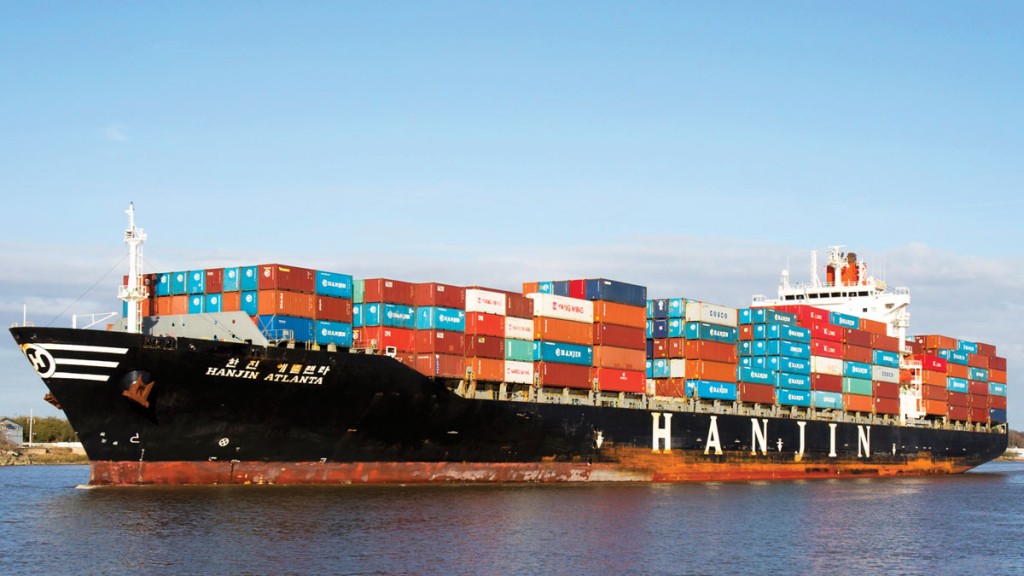
One of the world’s largest container lines has collapsed. Will this be a turning point for the shipping industry?
Some of the world’s largest container ships have been left floating at sea with $14bn of cargo on board after their owner, South Korea’s Hanjin Shipping, ran out of cash to pay for fuel or docking fees. Captains were ordered not to enter ports, in case the vessels are seized. But after 12 days adrift, food and water stocks are getting tight, one captain told The Wall Street Journal. Air conditioning is also being rationed, to cut energy use. “The heat is driving the crew crazy.”
Hanjin has filed for bankruptcy protection and has begun working with ports to slowly unload its ships. But dozens are still stranded and other firms are suffering from the ripple effects. Ports are refusing to handle Hanjin’s outbound containers, clogging up docks and yards at the busiest time of the shipping season. “This couldn’t come at a worse time,” said the head of one logistics firm.
The episode has big “dollops of ugly”, say Andy Mukherjee and David Fickling on Bloomberg Gadfly. Global trade growth has stuttered at a time when large numbers of new ships are entering the global fleet. The result has been collapsing freight rates and rising bankruptcies for heavily indebted firms. The question now is what happens to Hanjin, the biggest to go bust so far.
With total debt amounting to 152 times its earnings before interest and taxes, and more than $900m in liabilities to refinance between now and the end of 2017, survival in its current form is an “insurmountable challenge”.
Encouragingly, the Korean government has resisted calls for a state bailout, but one possibility is that its workforce and fleet may be absorbed by its smaller Korean rival Hyundai Merchant Marine (which has itself recently passed into the hands of its creditors). That would be the fourth major consolidation in the industry in the last 18 months. But “changing the names on the ownership documents of vessels” would do nothing to curb overcapacity. “The solution to the crisis in global shipping doesn’t lie in the office of a bankruptcy lawyer, but in a scrapyard.”
That’s because shipping is typical of cyclical industries, says John Gapper in the Financial Times. Firms “invest heavily near the peak of the cycle, trying to beat competitors. Then a downturn arrives at the same time as their new capacity.”
It’s puzzling why cyclical industries repeat this cycle of boom and bust – “short memories and young executives are probably to blame” – but shipping companies at least have an excuse. “They have not been through a crisis of this length and intensity before.” Yet excuses don’t help: the only answer is to destroy some of the “big, expensive” ships built at the peak of the cycle. “The difficulty is summoning the nerve to take painful action.”
Bids and deals: US rival makes hostile bid for SVG
One of America’s largest private-equity groups has launched a hostile bid for a UK rival. Boston-based HarbourVest has offered £5.60 per share for London-based SVG Capital, which owns stakes in brands including Dr. Martens and Kurt Geiger, valuing SVG at just over £1bn. HarbourVest says it plans to absorb and wind down
SVG’s operations.
The firm has scooped up an 8.5% stake in SVG and also has support from some of SVG’s largest investors, including Aviva and Old Mutual, locking up 51% of SVG’s total stock. Schroders, which is also a large investor, is yet to comment on the offer. SVG was originally the buy-out arm of Schroders but was spun off in 1996.
HarbourVest made a “courtesy call” to SVG’s chief executive, Lynn Fordham, to “alert her” to the bid, says Patrick Hosking in The Times, before launching the bid on Monday. Fordham, “a steely, no-nonsense Scot”, has been left “scrambling to come up with a defence”. SVG has reported six consecutive years of double-digit growth, but a takeover offers investors the “certainty of cash versus the uncertainty of long-term performance”, HarbourVest said. Its offer is “final”, so cannot be lifted under UK takeover rules.